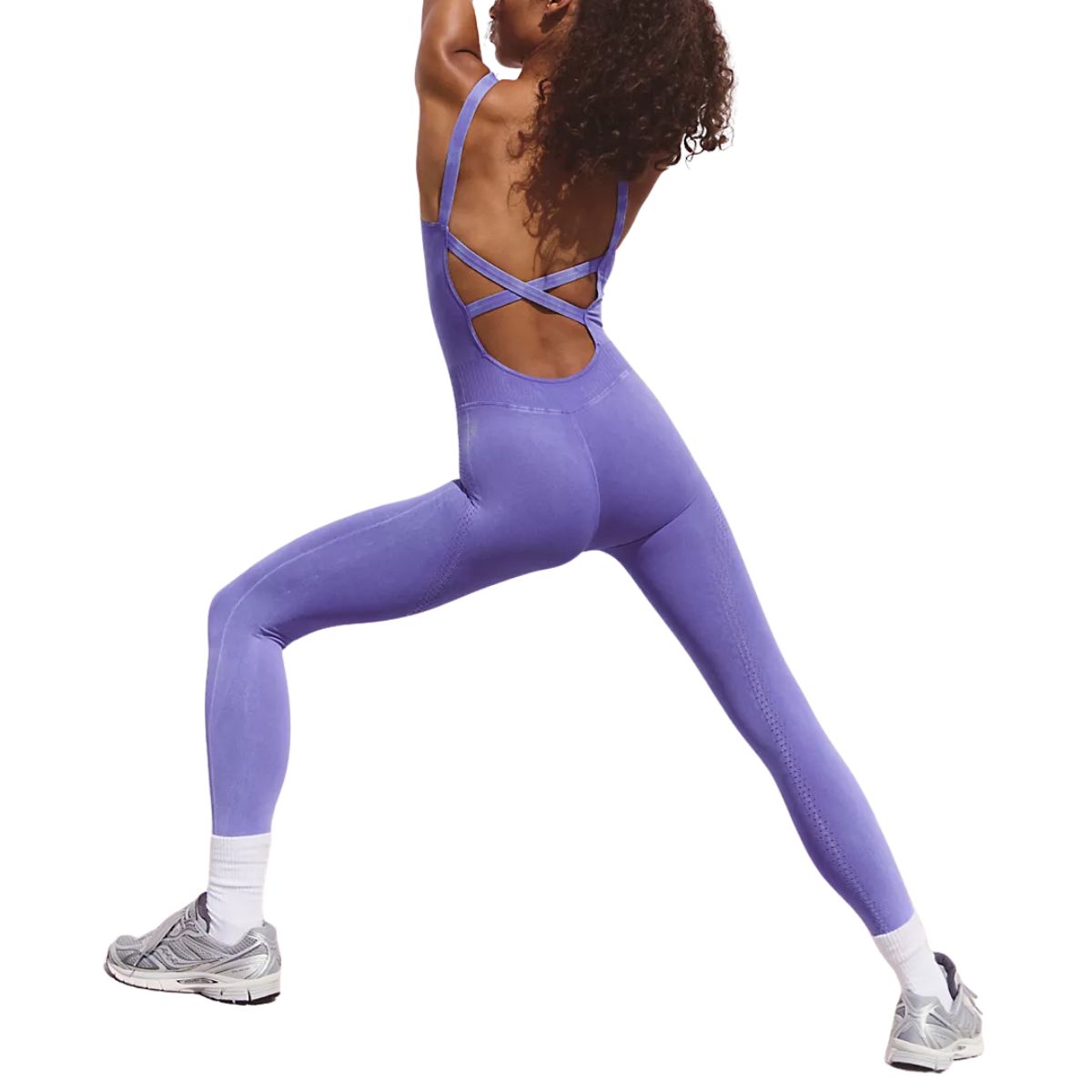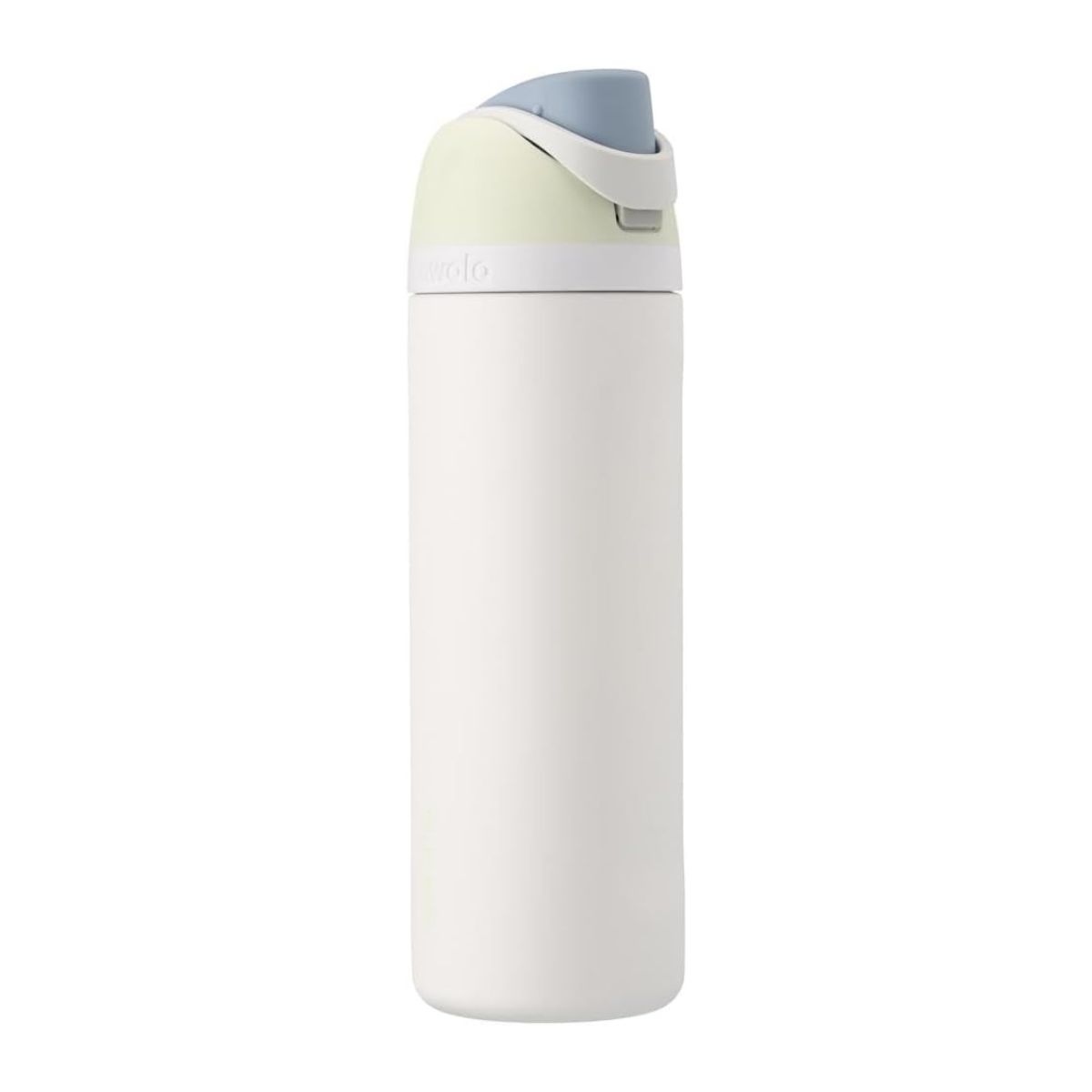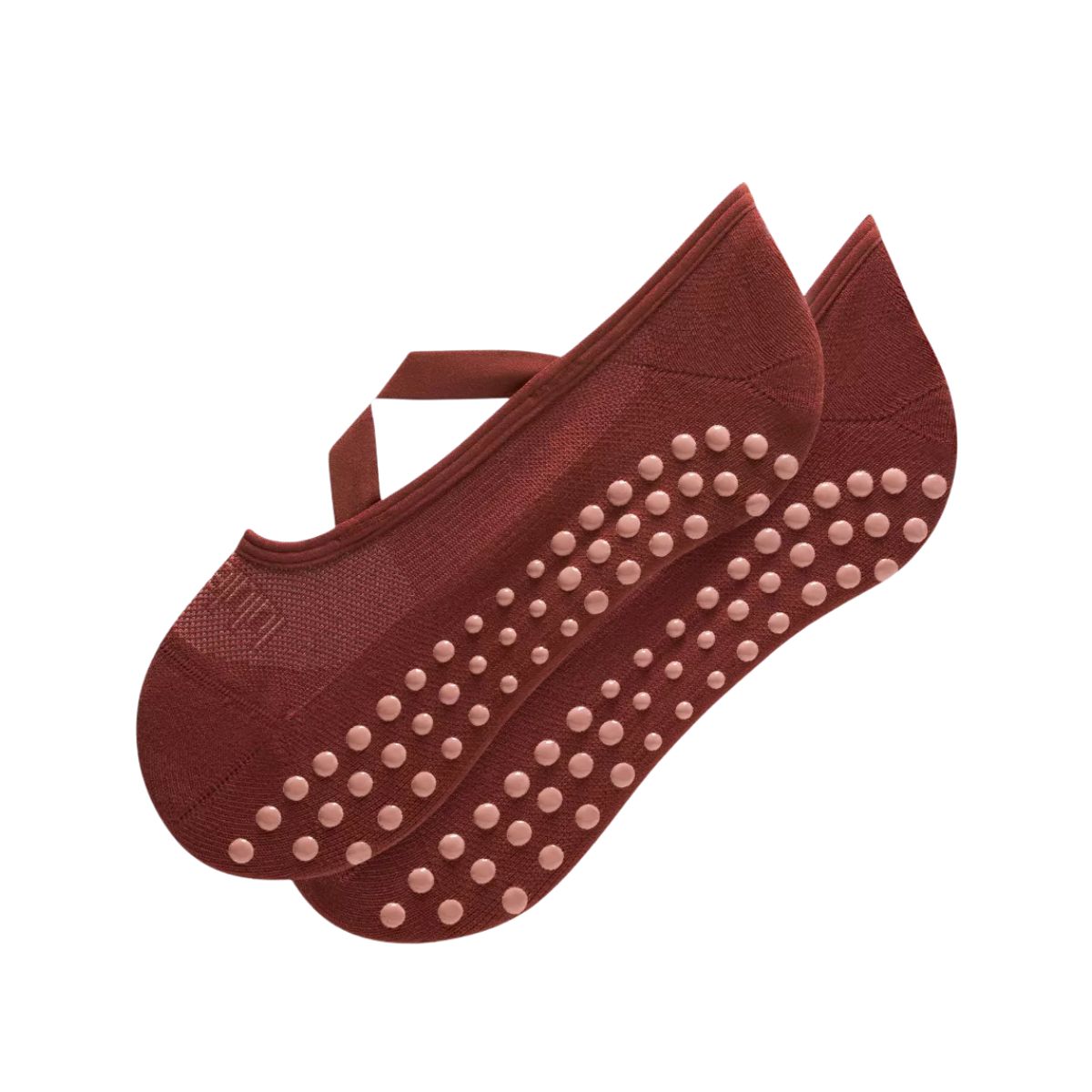I Switched My Reformer Practice for the Trending Lagree Method for 2 Weeks – And the Burn? Next Level
Reformer? Completed it. Lagree? Still recovering.
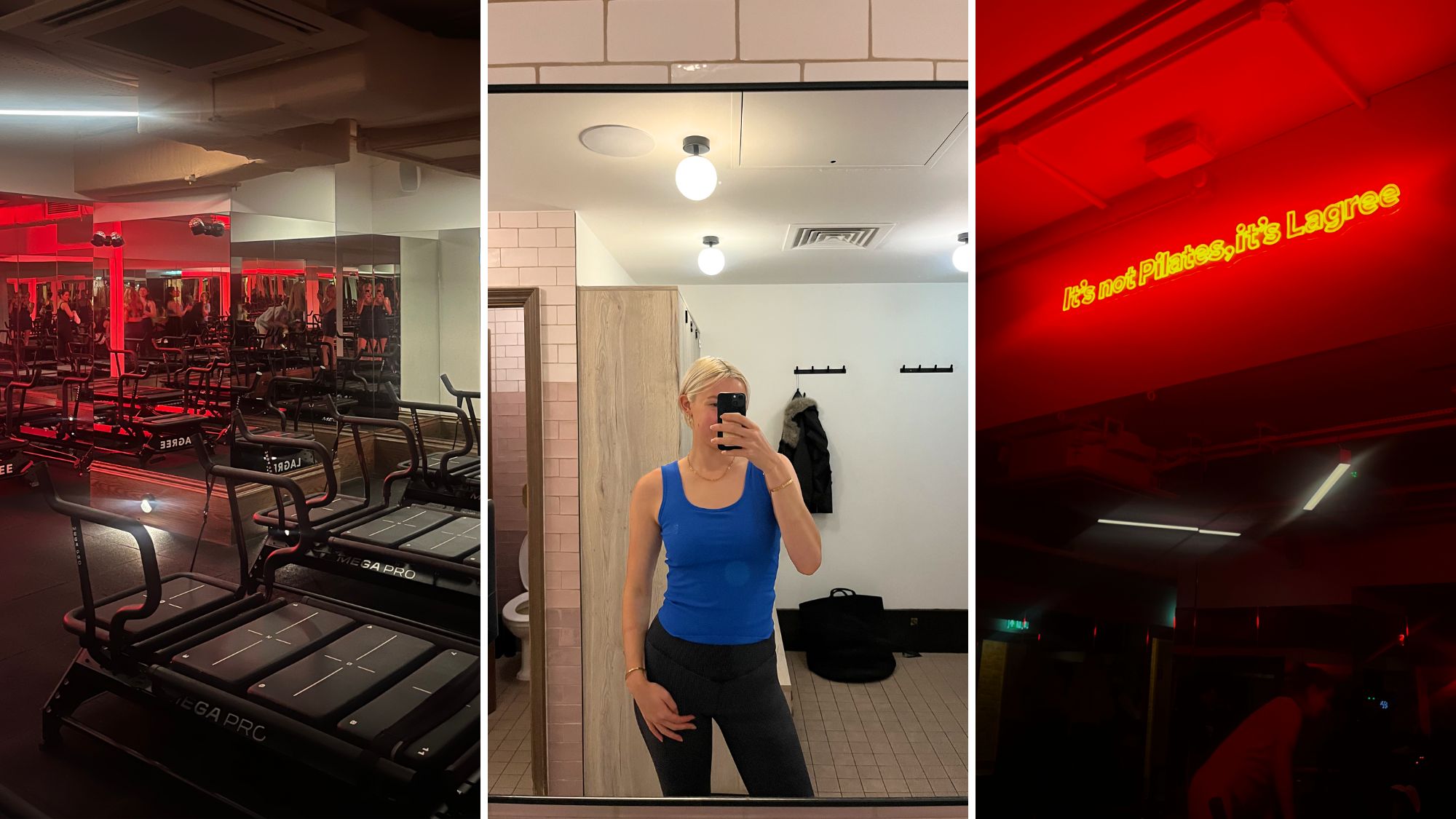

It’s not Pilates. It’s Lagree. Or so says the glowing neon sign above the mirrored studio walls of boutique Lagree studio, MAD London.
I’m sitting cross-legged on what looks, at first glance, suspiciously like a Pilates Reformer. If I hadn’t known better, I’d have dismissed the difference as the wellness world’s version of “it’s Levio-sar, not Leviosa” (Harry Potter fans, that one’s for you). But within minutes of my first class, it became clear: that sign earns its spot on the wall.
As a Health Writer and lifelong Pilates devotee, I’m almost embarrassed to admit Lagree had completely passed me by. Despite being huge in LA and loved by Jennifer Aniston and co., the method has remained surprisingly under the radar here in the UK - especially when you consider our collective obsession with Reformer. But after experiencing the low-impact, high-intensity burn for myself over the last two weeks, I’m convinced Lagree deserves a permanent place on your radar, particularly if you’re a Pilates regular looking for slower, tougher strength work which targets muscles you didn’t know you had.
Keen to read more about the Lagree method? Don't miss our guide. And for all things Pilates, don't skip our explainers on the best Pilates exercises for beginners, best Pilates core moves, best core sculpting Pilates moves and the best Pilates bar exercises, here. Keen to take it up a notch? Best advanced Pilates exercises and the best weighted Pilates moves, at the ready.
The Lagree Method Blends the Precision of Pilates With the Intensity of Strength Training - I’m, in a Word, Obsessed.
Where did the Lagree Method originate?
“The Lagree Method was created in Los Angeles by former bodybuilder and certified Pilates instructor Sebastian Lagree,” says Mona Halawi, co-founder of MAD London. “His vision was to combine the core-strengthening benefits of Pilates with the intensity of strength training and cardio, all in one, time-efficient workout.”
Lagree earned his Pilates certification back in 1998, but it was while applying bodybuilding techniques to the Reformer that he realised this hybrid approach delivered faster, more noticeable results for his clients, especially those looking to build strength and endurance without high-impact movement. Over the next three years, he refined the method and opened his first studio in 2001, in a space that doubled as his apartment.
It wasn’t until 2006, however, that he launched his first custom piece of equipment: the Proformer, the precursor to today’s Megaformer. With a wider platform, heavier resistance, and more handles, bungees, and cables, the Megaformer marked Lagree’s clear departure from traditional Pilates and was built to support high-intensity, full-body workouts with minimal rest and faster transitions.
Celebrity news, beauty, fashion advice, and fascinating features, delivered straight to your inbox!
What are the principles of the Lagree method?
Like Pilates, Lagree is built on a set of foundational principles, but unlike the more traditional practice, these continue to evolve in line with new research and technology. These principles “work together to create a high-intensity, low-impact workout that strengthens, tightens, and tones the body safely and efficiently,” says Halawi, who walks me through each one in turn.
1. Effective form
Lagree prioritises precise form and alignment to ensure muscles are recruited correctly and to reduce the risk of injury. “It's about control over momentum,” Halawi reminds us in class.
2. Effective range of motion
Once your form is in check, you’re encouraged to move through your maximum range of motion to fully engage and challenge the muscle fibres, but without ever going further than you can control. “Let’s perfect our form before we push the range of motion,” Halawi calls over the mic.
3. Effective tempo
The tempo in Lagree is painfully slow (and that’s, unfortunately, the point). Beginners start with a four-count out, four-count in rhythm, with each count representing two seconds. As you progress, tempos can extend to 16 counts per direction, meaning a single movement can take over a minute. Why? “More time under tension and greater muscle fatigue,” says Halawi.
4. Effective duration
That time under tension we just mentioned? It refers to how long your muscle is contracting during a set. “It’s one of the key elements of the Lagree practice,” says Halawi, who tells me that each exercise in Lagree lasts for at least one minute, though the machine is designed to work for sets of five minutes and beyond.
That matters because research shows that our aerobic system begins to kick in after one to two minutes of sustained low to moderate intensity effort. So whilst it may not feel like cardio in the traditional sense, Lagree does activate the cardiovascular system - just through a slower, strength-led route.
5. Effective resistance
Lagree uses two types of spring-based resistance: variable (as you push and release with control) and isometric (the deep, shaking holds I’m now horribly familiar with).
“Unlike traditional weight training, the springs offer resistance without impact on joints or connective tissue,” explains Lorraine Jenkins, Lagree instructor and founder of Love Lagree.
6. Effective incline
Newer Megaformers include a built-in ramp, designed to increase static resistance. Not only does this build muscle, but research shows that isometric holds also improve bone density; something that we as women should pay particular attention to as we approach perimenopause or menopause, when a drop in oestrogen levels accelerates bone degradation.
7. Effective sequence
Like Pilates, Lagree follows a structured sequence designed to optimise endurance and maximise time under tension.
8. Effective transition
In Lagree, rest is basically non-existent. Transitions are rapid, often with just a few seconds between exercises, in order to keep the heart rate elevated and maintain muscular demand. The goal is muscular endurance, which makes the flow between moves key.
9. Effective cueing
Unlike the Pilates Reformer, Lagree Megaformers are marked with numbered zones which instructors reference to guide the position of your carriage, as well as your body placement.
10. Effective planes of motion
This principle is still evolving. According to the official Lagree Fitness website, the ‘planes of motion’ focus “will apply to the Supra and Ultra, two advanced Lagree Fitness machines not yet released. More information will be shared closer to the launch date of these machines.” Watch this space.
Is Lagree better than Reformer Pilates?
That depends entirely on your goals, and, quite possibly, who you ask.
But according to Halawi, the two methods serve very different purposes. “Pilates focuses on controlled movement, breathwork, and alignment, which is ideal for rehabilitation and building foundational strength,” she explains. “Lagree, on the other hand, is more athletic, intense and results-driven. Combining strength, cardio, endurance, balance, and flexibility, with virtually no rest between exercises, it’s for those seeking a challenging, transformative workout in a short time.”
Jenkins agrees, adding that where most Reformer Pilates moves are designed to maintain a lower heart rate, Lagree is deliberately high-intensity. “The majority of exercises are performed standing, engaging multiple muscle groups at once, often for over three minutes,” she says. “That elevates the heart rate, induces sweat, and pushes muscular endurance in a way that classical Pilates doesn’t.”
I Tried Lagree, Hollywood’s Favourite Workout - and Wow, the Burn
Week one
When I arrived at MAD London for my two-week trial, I was advised to start with no more than two to three sessions a week, which I’ll admit I was a little sceptical about. With years of Reformer Pilates under my belt, I naïvely assumed I’d be able to manage four or five classes without any problem.
Let’s just say, I’m very glad I listened.
But let’s go back a step. MAD has two studios; one in Chelsea and one in Mayfair (where I’d be attending all of my Lagree sessions). Tucked just off Oxford Street, from the outside the studio looks small and unassuming. Once inside, however, it’s a multi-storey maze of studio space, changing rooms, and a health food bar, with a menu full of everything from acaï bowls to homemade protein balls. On the ground floor, you’ll find a Barre and Yoga studio, which looked beautiful, but wasn’t what I was there for. The studio I needed was down a level, low lit and filled with a fiery red glow coming from the aforementioned sign.

The famous MAD London sign, providing its important reminder
I was kicking things off with MAD’s Lagree Starter class, a session designed to ease newcomers into the method and get you familiar with the machine. I suggest that anyone else do the same, because, unlike Pilates, Lagree has its own terminology and structure. The machine has a front and back platform, is framed by a ring of handles (aptly named the ‘ring of fire’), and transitions are fast and slick, which means that getting to grips with the basics before you start is essential.
As I would quickly come to learn, most Lagree classes begin with a core series (typically a plank sequence), designed to switch your abs on from the first minute. I’ve always considered my core pretty strong, thanks to years of athletics and Pilates, but within moments of that first session, I was humbled. Halfway through the first set of ‘reverse giant bear’ (yes, that is a Lagree move), I found myself dropping to my knees for a breather.
The real irony of Lagree is that the slow pace is exactly what makes it so intense. Each move in my starter session followed a controlled four-count rhythm, which is the minimum time it should take to complete any Lagree exercise. Though it might sound manageable, holding a muscular contraction for eight to ten seconds requires such focus, strength and discipline, which I really wasn’t prepared for. It’s so tempting to speed up, especially when fatigue hits but as I kept internally reminding myself, that would defeat the point. You have to stay completely present, which makes Lagree a workout for your mind as much as your body.
For my second class, I stuck with the starter format (on my instructor’s advice) and gave myself a day’s rest in between. Even then, I returned sore, particularly through my core, but I was better prepared for what was to come.
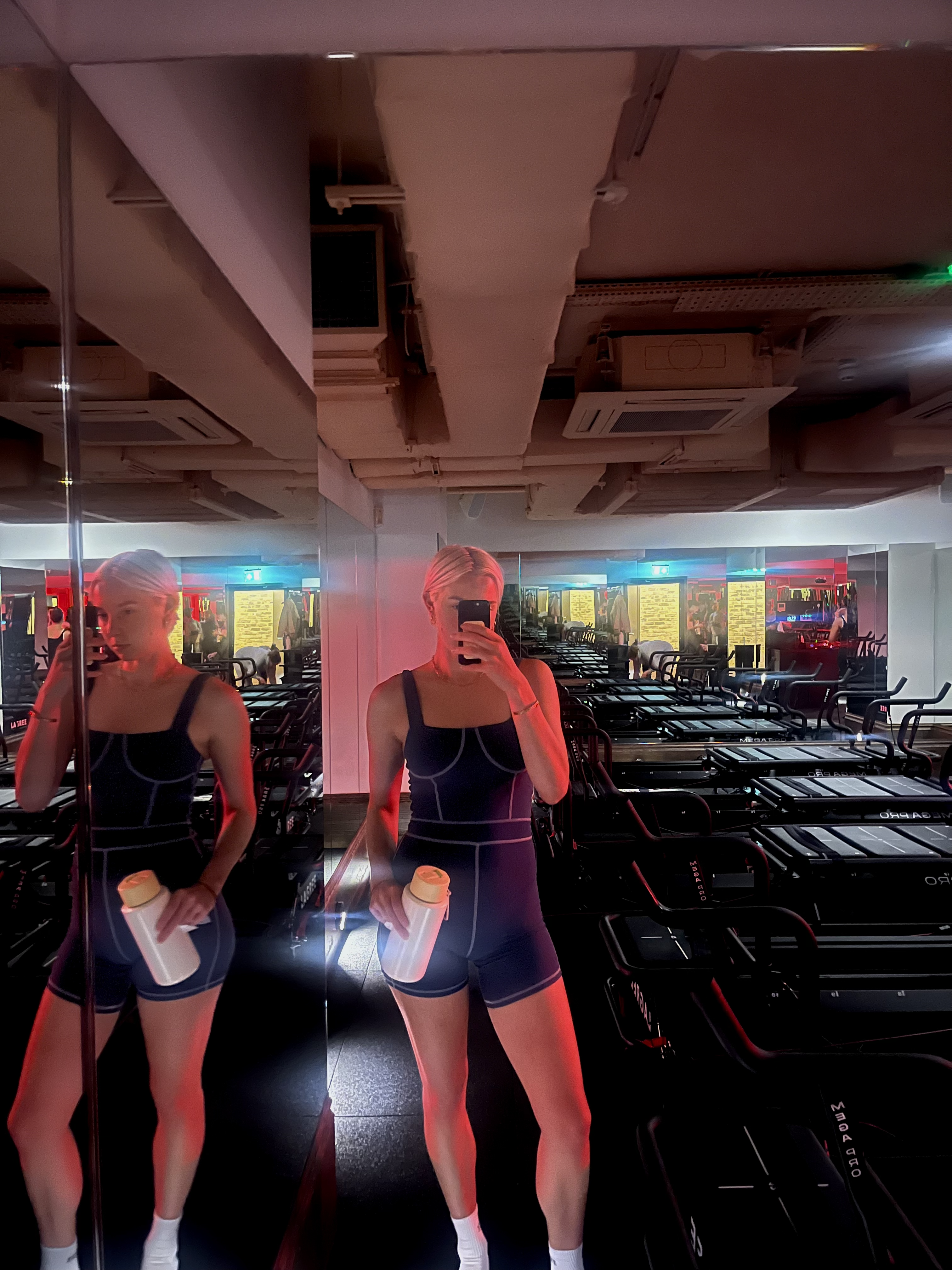
Ashleigh before her first Lagree Starter class - looking fresher than she was post-class
By my third session, I felt ready to take on a classic Lagree class. The jump in intensity was immediate. After a short standing mobility warm-up, we dived straight into an intense core series, before getting up onto our platforms for a long standing sequence, full of elevator lunges and inner thigh work.
Like Pilates, breathwork is key to Lagree, but when you’re struggling, it’s easy to forget. I caught myself holding my breath more than once, especially when my abs started to burn. Thankfully, the instructors cue breath constantly, reminding you that audible exhales are very much encouraged (and usually necessary).
Week two
By week two, I was getting the hang of the machine and the class structure - so I booked a classic session with Mona, one of MAD’s founders, which turned out to be one of the best workout classes I’ve ever done.
Her cueing was sharp and clear, and her hands-on adjustments were always necessary and supportive; never intrusive. Her experience both as a student and a teacher showed, as she was able to clearly explain and model what accurate alignment should feel like, allowing us to find positions that would work our bodies that bit harder than we wanted to.
As someone who’s fallen out of love with traditional gym sessions in recent years, Lagree really does hit a sweet spot I’ve been missing. It delivers the full-body, weights-style burn of resistance training, but with the breath and control of Pilates, minus the need to plan your own routine or fight for a squat rack.
I’m also a resistance band devotee, so getting to use the bungee cords for donkey kicks and fire hydrants, before seamlessly shifting into sumo squats on the inclined platform, and finishing with saw planks on the moving carriage was a novelty I haven’t experienced in any other class.
For my final session, I signed up for an arms and abs-focused Lagree class with MAD’s other founder, Nour. Like Mona, she was warm, welcoming, and encouraging. At this point, two weeks in, I was still easily the weakest in the room, but never once did she make me feel self-conscious or out of place.
The upper body isn’t usually my favourite area to train, but the group environment of Lagree helps. Our session concentrated on cable chest presses and tricep extensions blended with core burners like side planks and pulses. Nour also asked if anyone had any requests for particular moves, something I rarely hear in other studios, but which really contributed to the community environment.
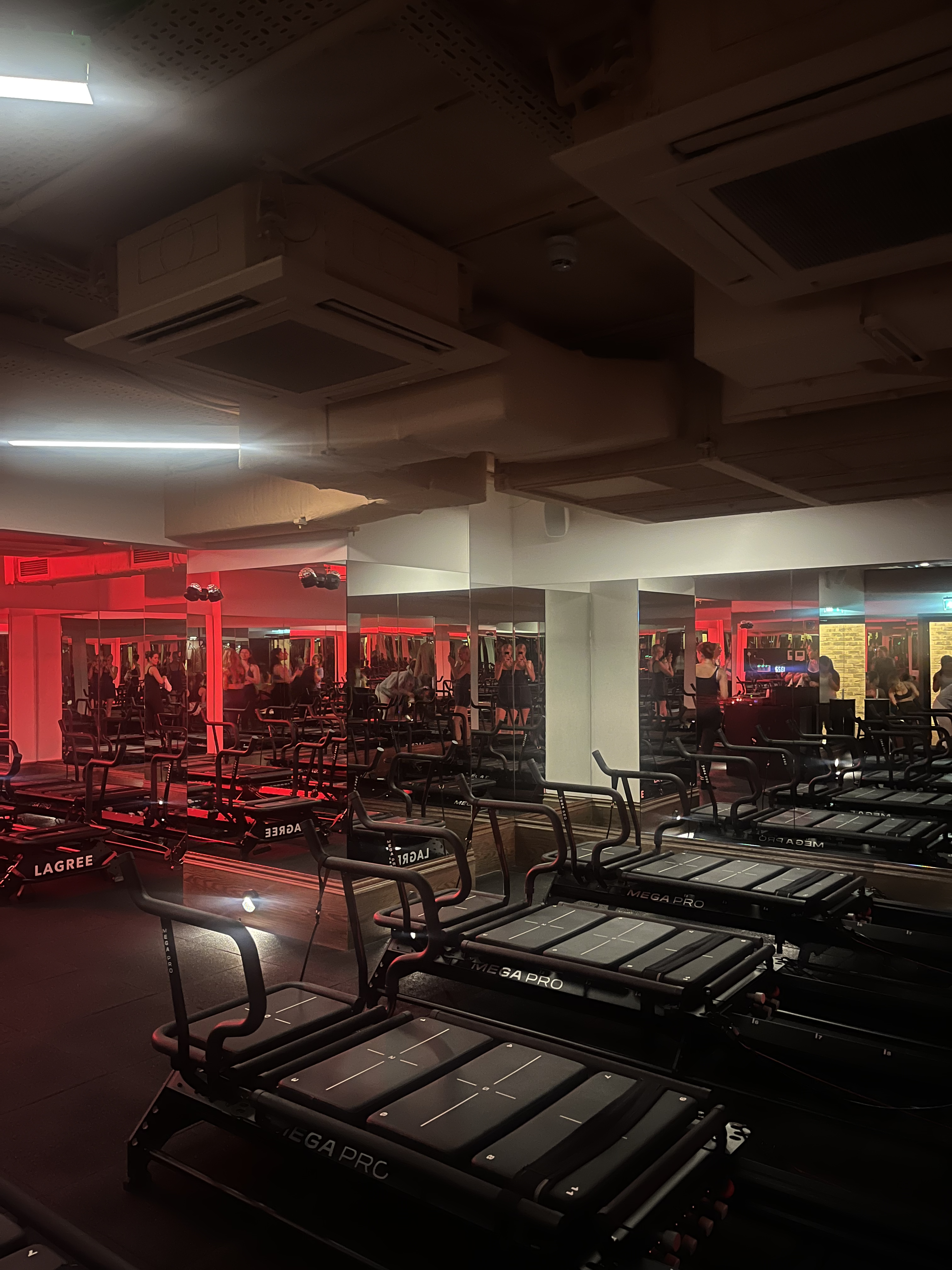
The Lagree Megaformer is larger and wider than a Pilates Reformer, with extra handles, numbers and bungee cables
Though I still have a long way to go to be in any way ‘good’ at Lagree, I’ve noticed immediate differences in strength over the last fortnight. My control and endurance have both improved, and I can now hold positions that had felt impossible in week one. And maybe it’s a placebo, but I’m sure I have some new muscles visibly appearing in my back and obliques, too.
Of course, like most luxury fitness concepts, accessibility is still an issue. As with Reformer, Lagree doesn’t come cheap - a single drop in class at MAD costs £35, and with only a handful of studios across the UK, it’s far from mainstream. But if you have the means and the access, I genuinely believe it’s worth it.
I know that if I could, I’d be there every week.
Shop MC-UK approved Lagree essentials now:
How many times a week should I do Lagree classes?
“For beginners, we recommend starting with two sessions a week to allow the body to adapt to the intensity,” says Mona Halawi, co-founder of MAD London. “As strength and endurance improve, three to four sessions per week can help you see consistent results.”
Because Lagree is low-impact, it’s safe to practise frequently, but that doesn’t mean you should skip your rest days. “Recovery is essential for muscle repair and growth,” she adds.
That said, Lagree doesn’t have to be your only workout. “It complements running, weight training, yoga and even personal training,” explains Lorraine Jenkins, founder of Love Lagree. “If you’re incorporating it into a broader fitness routine, one to two classes a week may be plenty, provided you’re also giving your body time to rest and rebuild.”

A former heptathlete, Ashleigh is a freelance journalist, specialising in women’s health, wellbeing and lifestyle, with words in Stylist, Cosmopolitan, Glamour and Marie Claire. She’s also the Co-Founder of Sunnie Runners, an inclusive London based run club.
